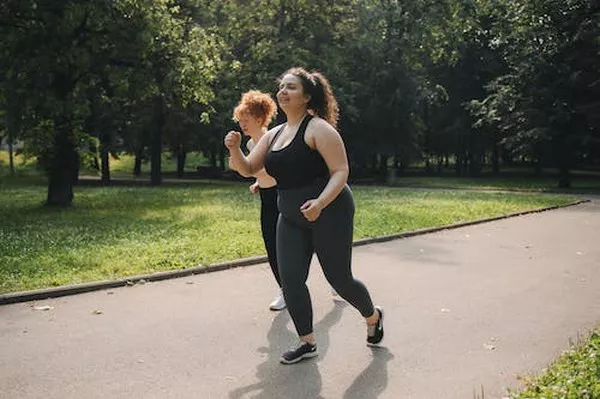Belly fat can be a stubborn area to lose weight, and many people wonder if walking can help to reduce this type of fat. In this article, we will explore the relationship between walking and belly fat, and whether or not walking can be an effective way to lose belly fat.
What Causes Belly Fat?
Before we discuss the effectiveness of walking for losing belly fat, it’s important to understand what causes this type of fat. Belly fat, also known as visceral fat, is a type of fat that surrounds your internal organs. It’s often linked to an increased risk of chronic diseases, such as type 2 diabetes, heart disease, and certain types of cancer.
Belly fat can be caused by a variety of factors, including genetics, diet, and lack of physical activity. Consuming a diet high in sugar and processed foods, as well as leading a sedentary lifestyle, can contribute to the development of belly fat.
Can Walking Help to Lose Belly Fat?
Walking is a low-impact exercise that can be a great way to increase physical activity and burn calories. However, whether or not walking can help to specifically target and reduce belly fat is a matter of debate.
Some studies have suggested that walking can be an effective way to reduce belly fat. One study published in the Journal of Exercise Nutrition and Biochemistry found that a 12-week walking program led to significant reductions in belly fat in overweight women.
Another study published in the Journal of Applied Physiology found that walking for 30-60 minutes per day, five days per week, led to significant reductions in belly fat in postmenopausal women.
However, other studies have found that walking alone may not be enough to specifically target and reduce belly fat. One study published in the International Journal of Obesity found that a combination of aerobic exercise and strength training was more effective for reducing belly fat than either exercise alone.
It’s important to note that the effectiveness of walking for losing belly fat may depend on the intensity and duration of the activity. Walking at a brisk pace, for a longer duration, and on a regular basis may be more effective than leisurely walking for short periods of time.
Other Strategies for Losing Belly Fat
While walking can be a beneficial form of exercise for overall health and weight loss, there are other strategies that can be effective for specifically targeting and reducing belly fat.
- Diet: Consuming a diet high in whole, nutrient-dense foods and low in processed foods and added sugars can help to reduce belly fat. Eating a diet rich in fiber, protein, and healthy fats can also be beneficial.
- Strength Training: Strength training can help to build muscle mass, which can increase metabolism and help to burn more calories at rest. Incorporating strength training exercises, such as squats, lunges, and planks, into your exercise routine can be effective for reducing belly fat.
- High-Intensity Interval Training (HIIT): HIIT involves short bursts of intense activity followed by brief periods of rest. This type of exercise has been shown to be effective for burning fat, including belly fat.
- Stress Management: High levels of stress can contribute to the development of belly fat. Finding ways to manage stress, such as through meditation, yoga, or deep breathing exercises, can be beneficial for reducing belly fat.
Walking can be a beneficial form of exercise for overall health and weight loss. While it may be effective for reducing belly fat in some individuals, other strategies, such as strength training and HIIT, may be more effective for specifically targeting and reducing belly fat. Combining a variety of exercises, along with a healthy diet and stress management techniques, can be effective for reducing belly fat and improving overall health.


